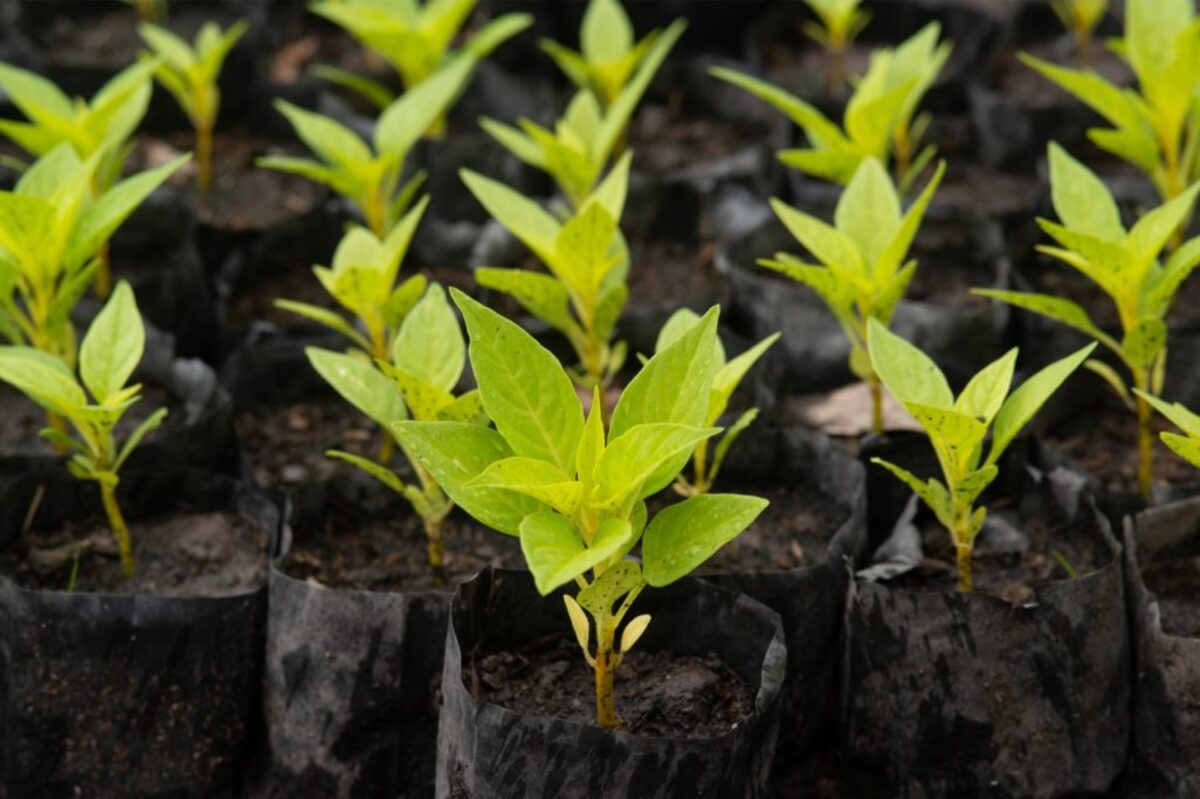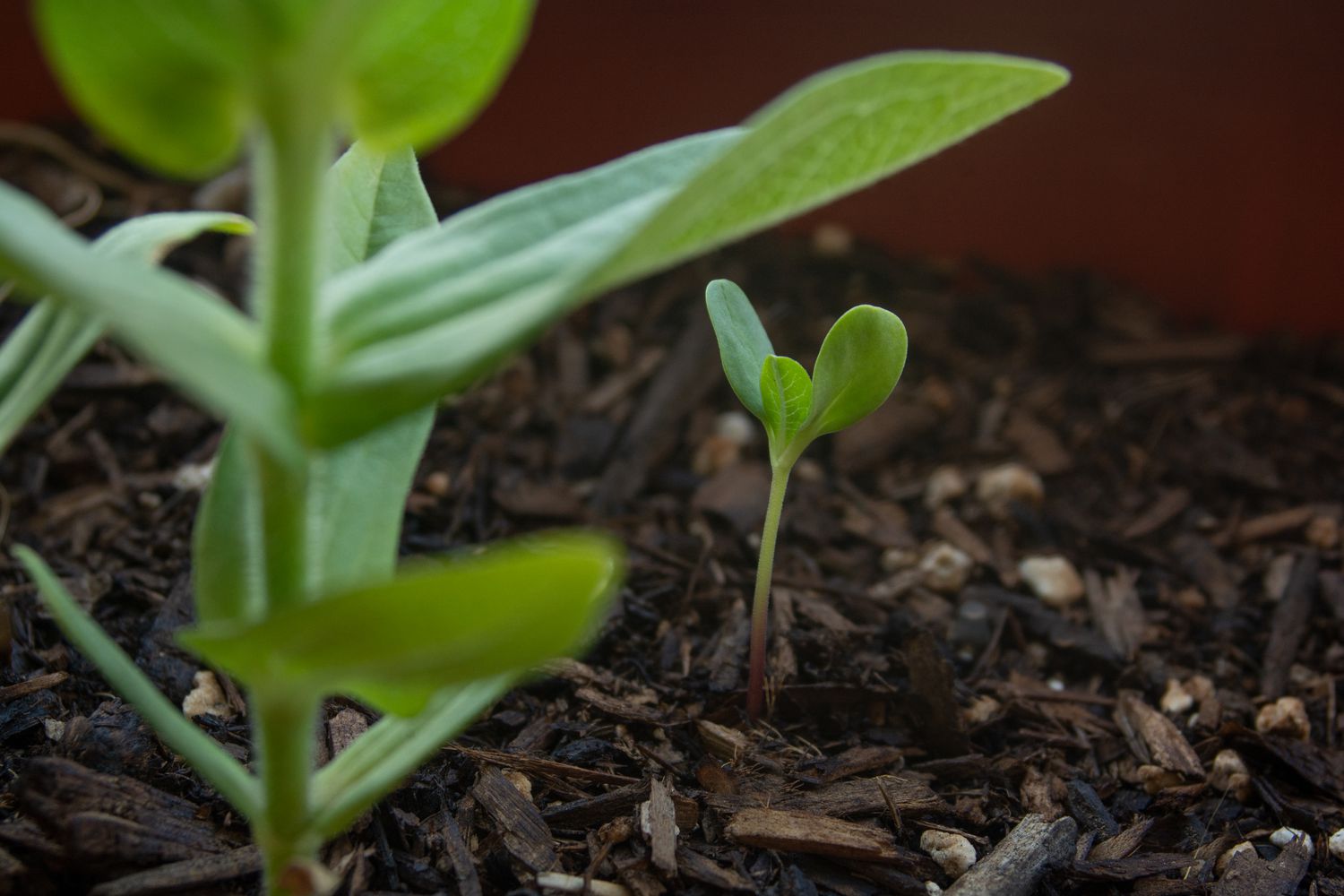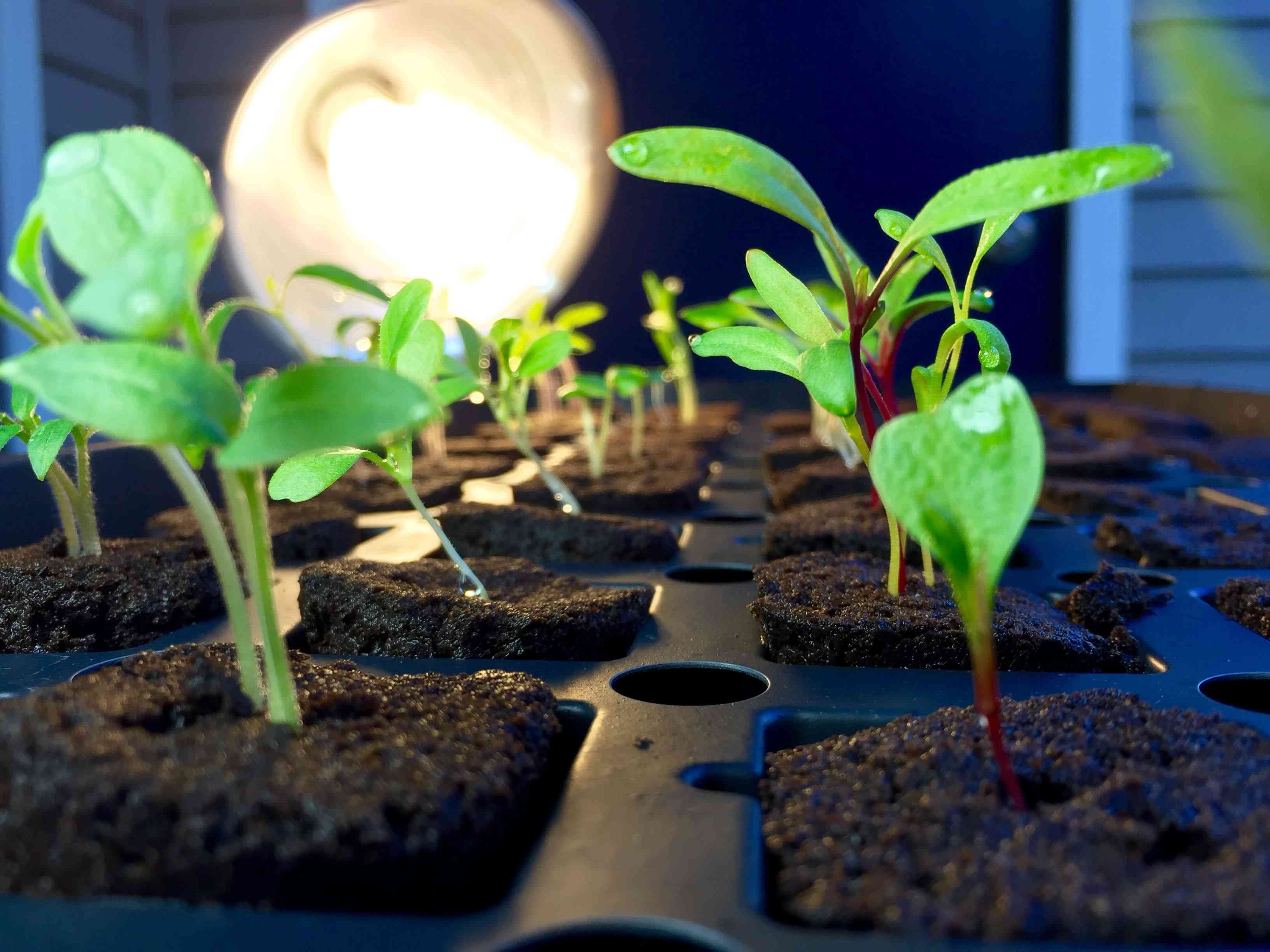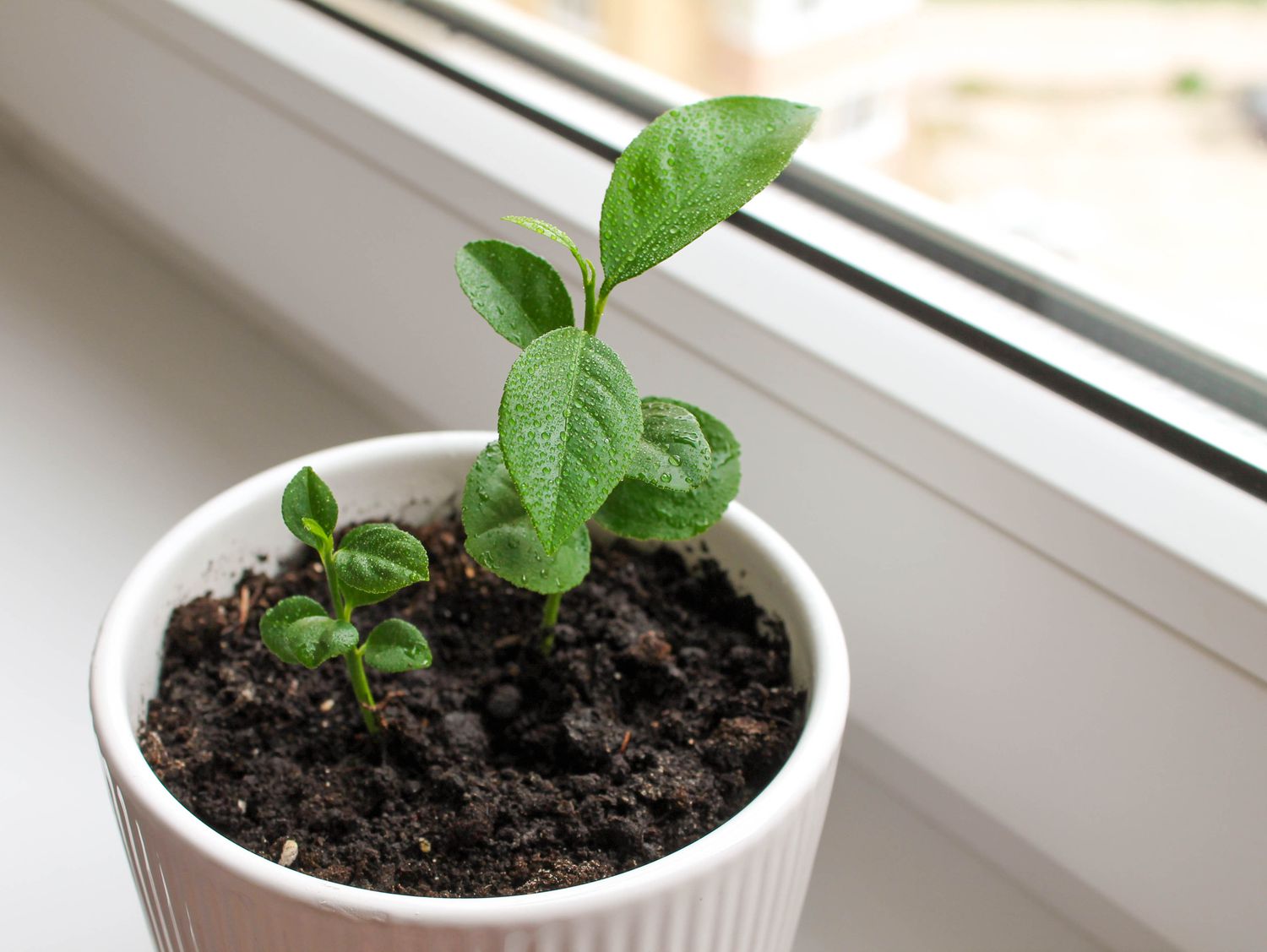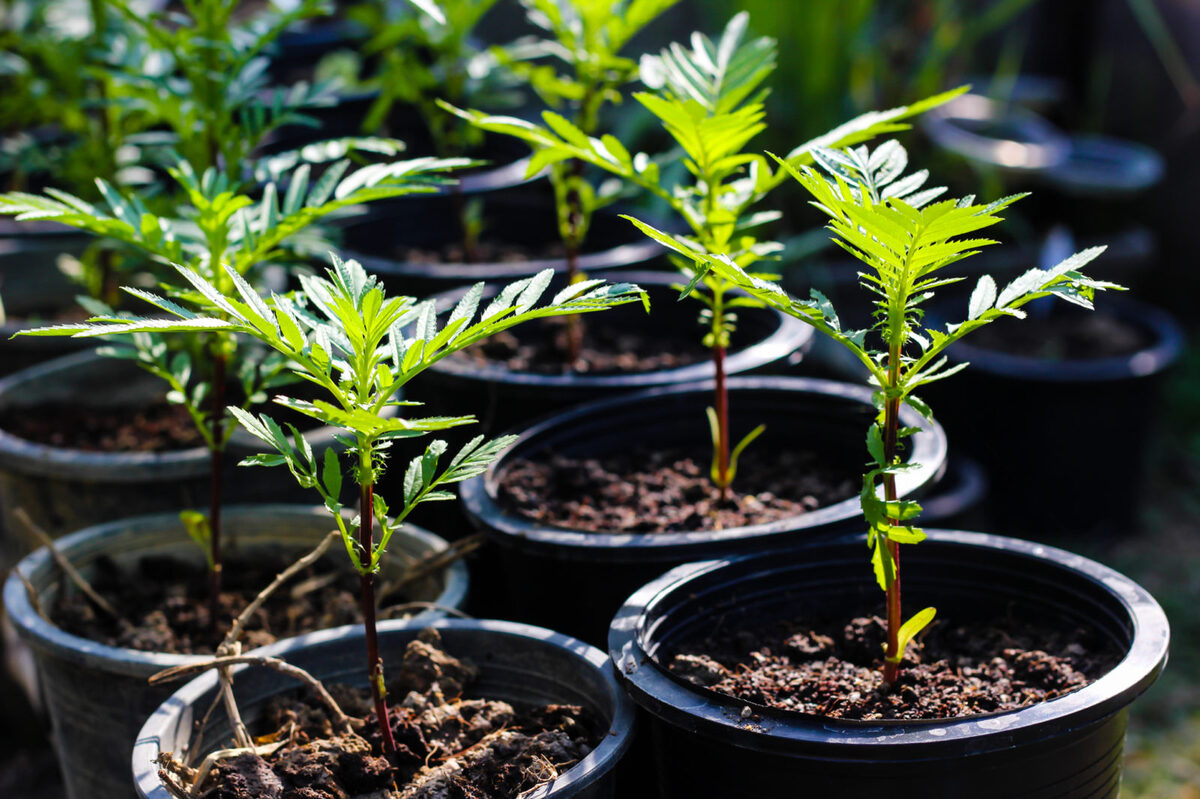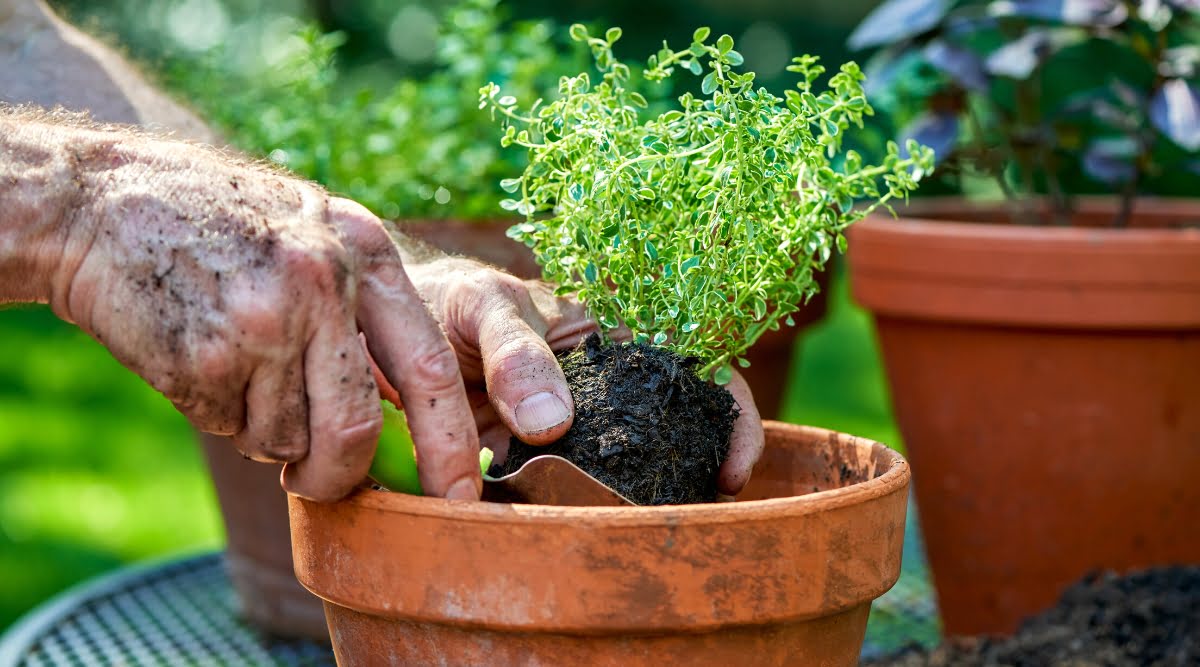Home>Gardening Techniques>Plant Care>How Bad Will Plants Go Into Shock When Transplanting From Soil To Aeroponics


Plant Care
How Bad Will Plants Go Into Shock When Transplanting From Soil To Aeroponics
Modified: January 22, 2024
Discover how plants react when transitioning from soil to aeroponics. Learn about plant care and potential shock during transplanting.
(Many of the links in this article redirect to a specific reviewed product. Your purchase of these products through affiliate links helps to generate commission for Chicagolandgardening.com, at no extra cost. Learn more)
Table of Contents
- Introduction
- Understanding Plant Shock during Transplanting
- The Benefits of Aeroponics for Transplanting
- Factors Affecting Plant Shock in Aeroponic Transplantation
- Steps to Minimize Plant Shock when Transplanting from Soil to Aeroponics
- Common Signs of Plant Shock in Aeroponics
- Tips for Successful Transplantation from Soil to Aeroponics
- Conclusion
Introduction
Transplanting plants from soil to aeroponics is a popular technique among gardeners and plant enthusiasts. Aeroponics, a soilless growing method, involves suspending plant roots in the air and providing them with a nutrient-rich mist. This innovative approach offers numerous benefits, including increased oxygenation, improved nutrient uptake, and efficient use of space.
However, as with any transplanting process, plants may undergo a period of shock during the transition from soil to aeroponics. This shock can negatively impact the health and growth of plants, resulting in stunted growth, wilting, and even plant death if not properly managed.
Understanding the causes of plant shock during transplanting and implementing effective strategies to minimize its impact are crucial for successful plant growth in aeroponics systems. By taking the necessary precautions and providing optimal care, gardeners can help their plants adjust smoothly to the new environment and thrive in this soiless growing method.
In this article, we will delve into the concept of plant shock during transplanting, explore the benefits of aeroponics for transplanting, discuss the factors that affect plant shock in aeroponic transplantation, provide steps to minimize plant shock, and highlight common signs of plant shock in aeroponics. Additionally, we will share valuable tips for a successful transplantation from soil to aeroponics.
So, if you’re ready to enhance your plant care knowledge and ensure the seamless transition of your plants to an aeroponic system, let’s dive in!
Understanding Plant Shock during Transplanting
Plant shock is a common phenomenon that occurs when plants are subjected to stressful conditions, such as transplanting from one growing medium to another. It is a natural response of plants to the disruption of their root system and the change in growing environment.
During the transplanting process, plant roots experience damage and disturbance, which can lead to a temporary halt in their growth and nutrient uptake. This disruption can induce physiological changes in plants, causing them to go into shock.
When plants go into shock, their ability to absorb water and nutrients is compromised, resulting in wilting, yellowing leaves, and overall poor health. The severity and duration of plant shock can vary, depending on factors such as plant species, age, size, and overall health.
It’s important to note that plant shock is a normal response and can be managed effectively to minimize its impact on plant health and growth. By understanding the factors that contribute to plant shock and taking appropriate measures, we can help plants recover quickly and thrive in their new growing environment.
One of the key factors contributing to plant shock during transplanting is the disruption of the root system. In soil-based gardening, plants develop a complex network of roots that anchor them in the ground and provide access to water and nutrients. When plants are uprooted, these delicate roots can become damaged or disturbed, disrupting the plant’s ability to take up essential resources.
Additionally, the change in growing environment from soil to aeroponics can also contribute to plant shock. In the transition to an aeroponic system, plants are no longer surrounded by soil, but rather have their roots suspended in the air. This change in moisture levels, oxygen availability, and nutrient delivery can be initially challenging for plants to adapt to.
In the next section, we will explore the benefits of using aeroponics for transplanting and how this growing method can help mitigate plant shock.
The Benefits of Aeroponics for Transplanting
Aeroponics, as a transplanting method, offers several advantages over traditional soil-based gardening. By understanding these benefits, we can better appreciate how aeroponics can help mitigate plant shock and promote healthy plant growth.
One of the key benefits of aeroponics is the increased oxygenation that plants receive. In an aeroponic system, plant roots are exposed to a highly oxygenated mist, allowing them to absorb oxygen more easily. This improved oxygenation promotes root development and enhances nutrient uptake, resulting in healthier and more vigorous plants.
Another advantage of aeroponics is the precise delivery of nutrients to plant roots. In a soil-based system, nutrients can be unevenly distributed and may take time to reach the roots. However, in aeroponics, a nutrient-rich mist is directly sprayed onto the roots, ensuring efficient and immediate nutrient uptake. This targeted delivery system optimizes plant growth and minimizes nutrient deficiencies.
Aeroponics also offers a space-saving advantage, making it an ideal choice for transplanting. With plants’ roots suspended in the air, there is no need for large pots or garden beds. This efficient use of space allows for more plants to be grown in a smaller area, making it suitable for urban gardening or indoor cultivation.
Moreover, the absence of soil in aeroponics eliminates the risk of soil-borne diseases and pests. Plants grown in soil are often susceptible to various pathogens and insects that can hinder their growth and overall health. By transplanting to an aeroponic system, plants are less likely to contract such diseases, leading to reduced risk and increased plant longevity.
Aeroponics also provides a sterile growing environment, as the roots are not in contact with soil or other organic matter. This cleanliness minimizes the chances of contamination and offers a controlled environment for plant growth.
Overall, aeroponics can significantly contribute to the successful transplantation of plants by reducing the risk of plant shock and providing a conducive growing environment. In the following section, we will discuss the factors that can affect plant shock in aeroponic transplantation and how to mitigate them effectively.
Factors Affecting Plant Shock in Aeroponic Transplantation
While aeroponics offers numerous benefits for transplanting, there are several factors that can contribute to plant shock during the transition from soil to an aeroponic system. Being aware of these factors can help in minimizing plant shock and ensuring the successful establishment of plants in an aeroponic environment.
One of the primary factors affecting plant shock is the disturbance and damage to the root system during transplantation. As plants are uprooted from soil and their roots are exposed to the air, they can experience stress and damage. It is essential to handle plants carefully during the transplanting process to minimize root disruption and promote root health.
Another critical factor to consider is the difference in moisture levels between soil and aeroponics. In a soil-based system, plants receive continuous moisture from the surrounding soil. However, in aeroponics, the roots are suspended in the air and must rely on a nutrient-rich mist for moisture. This transition can be challenging for plants and can lead to dehydration if the misting system is not properly adjusted or maintained.
Nutrient availability is also a significant factor affecting plant shock in aeroponic transplantation. In soil, plants can access a wide range of nutrients provided by the organic matter. However, in an aeroponic system, the nutrient solution needs to be properly formulated and delivered to the roots. Imbalances or deficiencies in key nutrients can result in plant stress and poor growth. Regular monitoring and adjustment of nutrient levels are crucial to minimize plant shock.
Lighting is another important factor to consider in aeroponic transplantation. While plants rely on sunlight for energy in soil-based gardening, in an aeroponic system, artificial lighting is commonly used. The transition from natural to artificial light sources can impact plant growth and development. Providing the appropriate light spectrum and intensity is necessary to ensure optimal photosynthesis and mitigate plant shock.
Temperature also plays a role in plant shock during aeroponic transplantation. Sudden changes in temperature can stress plants and hinder their ability to recover from transplant shock. Maintaining stable and appropriate temperature levels throughout the transplanting process is essential for minimizing stress and promoting healthy plant adaptation to the new environment.
Lastly, the timing of transplantation can influence plant shock. Transplanting during periods of high heat or environmental stress can increase the likelihood of plant shock. Choosing the right time to transplant, when plants are in a healthy and active growth phase, can facilitate a smoother transition and minimize stress on the plants.
By understanding and addressing these factors, gardeners can reduce the impact of plant shock during aeroponic transplantation and promote the successful establishment and growth of their plants in this innovative growing method.
Steps to Minimize Plant Shock when Transplanting from Soil to Aeroponics
Transplanting plants from soil to aeroponics requires careful attention and implementation of specific steps to minimize plant shock and encourage successful adaptation to the new growing environment. By following these steps, you can help your plants transition smoothly and thrive in an aeroponic system.
1. Prepare the plants: Before transplanting, ensure that your plants are healthy and in an active growth phase. Prune any damaged or diseased foliage and gently loosen the roots to stimulate new growth.
2. Adjust the watering schedule: Gradually reduce the frequency of watering leading up to the transplant to allow the soil to dry out slightly. This step helps prepare the plants for the transition to a soil-less environment and encourages root development.
3. Choose the right size and type of container: Select containers that are appropriate for the size and growth habit of your plants. Ensure that the containers have adequate drainage to prevent waterlogging, which can lead to root rot and plant stress.
4. Prepare the aeroponic system: Set up the aeroponic system and adjust the nutrient solution to the appropriate levels. Ensure that the misting system is functioning correctly and delivers a fine mist to the plant roots.
5. Transplant with care: Gently remove the plant from the soil, taking care not to damage the roots. Place the plant in the aeroponic container, making sure that the root system is fully submerged in the nutrient mist. Avoid packing the growing medium tightly around the roots, as this can restrict airflow.
6. Provide a transition period: To minimize plant shock, consider providing a transition period in which you gradually increase the misting frequency and nutrient concentration. This gradual adjustment allows plants to acclimate to the new growing environment without experiencing sudden changes in moisture and nutrient levels.
7. Monitor and adjust: Regularly check the plants for any signs of stress or nutrient deficiencies. Adjust the misting frequency and nutrient levels as necessary to ensure optimal plant health and growth.
8. Provide supplemental lighting: If necessary, supplement natural light with artificial lighting to ensure that plants receive adequate light for photosynthesis. Consider the light requirements of your specific plant species and provide the appropriate light spectrum and intensity.
9. Maintain optimal growing conditions: Monitor and maintain key environmental factors such as temperature, humidity, and ventilation. Aim to create a stable and conducive environment for plant growth to minimize plant shock and promote healthy adaptation.
10. Ongoing care and observation: Continuously monitor the plants and make adjustments as needed. Prune any dead or diseased foliage, check for pests, and provide necessary maintenance to keep the aeroponic system running smoothly.
By following these steps, you can minimize plant shock during the transplanting process and create favorable conditions for your plants to thrive in an aeroponic system.
Common Signs of Plant Shock in Aeroponics
When plants are transplanted from soil to an aeroponic system, they may experience varying degrees of shock as they adjust to the new growing environment. It is important to be able to recognize the signs of plant shock in aeroponics so that appropriate measures can be taken to support their recovery. Here are some common signs to look out for:
- Wilting: One of the most noticeable signs of plant shock is wilting. The leaves of a shocked plant may appear droopy and limp, indicating that the plant is struggling to take up water and nutrients properly. Wilting can occur due to root damage or the plant’s inability to adapt to the new moisture levels in aeroponics.
- Yellowing leaves: Another common symptom of plant shock is yellowing leaves. When plants are stressed, they may start to lose chlorophyll, causing their leaves to turn yellow. This can occur as a result of nutrient imbalances, inadequate oxygenation, or disruptions in the plant’s ability to photosynthesize efficiently.
- Stunted growth: Plant shock can significantly slow down or halt the growth of plants. Shocked plants may exhibit little to no new growth and may appear smaller in size compared to healthy plants. This stunted growth can be the result of root damage, nutrient deficiencies, or physiological stress caused by the transplanting process.
- Leaf drop: In some cases of severe plant shock, plants may shed their leaves as a survival mechanism. This is a natural response to stress, as the plant tries to divert its energy towards root recovery. While leaf drop can be alarming, it is important to provide proper care and allow the plant to recover from the shock.
- Delayed flowering or fruiting: Plant shock can cause delays in flowering or fruiting. The stress experienced during transplantation can disrupt the natural growth cycle of the plant, affecting its ability to produce flowers and fruit. This delay in reproductive growth is temporary and typically resolves as the plant recovers from shock.
- General decline in plant health: Overall, shocked plants may exhibit a decline in their overall health. This can include a lack of vigor, dull or discolored foliage, and reduced pest and disease resistance. As the plant focuses its energy on recovering from shock, its ability to defend against external stressors is compromised.
It is important to note that while these signs indicate plant shock, many of them can also be attributed to other factors such as nutrient imbalances, lighting issues, or pest infestations. Therefore, it is crucial to thoroughly assess the growing conditions and consider all potential causes before concluding that the symptoms are solely due to transplant shock.
By closely observing the signs of plant shock, gardeners can promptly identify and address any issues, allowing the plants to regain their health and thrive in the aeroponic system.
Tips for Successful Transplantation from Soil to Aeroponics
Transplanting plants from soil to aeroponics requires careful planning and execution to ensure successful adaptation and growth. By following these tips, you can increase the chances of a smooth transition and promote the health and vitality of your plants in the aeroponic system.
- Choose healthy plants: Select plants that are in good health and free from diseases or pests. Strong and disease-resistant plants have a higher chance of successfully adapting to the new growing conditions.
- Timing is crucial: Choose an appropriate time for transplantation when plants are in their active growth phase. Avoid transplanting during periods of extreme heat or environmental stress, as this can further shock the plants.
- Water properly: Ensure that the aeroponic system provides sufficient and consistent moisture to the plant roots. Monitor the misting frequency and adjust it as needed to avoid over- or under-watering.
- Gradual transition: Provide a gradual transition for plants by gradually increasing the misting frequency and nutrient concentration over a period of time. This helps acclimate the plants to the new environment and reduces the risk of shock.
- Monitor nutrient levels: Regularly monitor and adjust the nutrient levels in the aeroponic system to ensure that plants receive the necessary elements for healthy growth. Test the pH and adjust it if needed to maintain optimal nutrient uptake.
- Prune and trim: Prune any damaged or diseased foliage before transplanting to encourage new growth and reduce the risk of spreading diseases. Continue to trim and prune as needed to maintain plant health and shape.
- Provide appropriate lighting: Ensure that the plants receive the right amount and spectrum of light. Adjust the artificial lighting to match the light requirements of the specific plant species being transplanted.
- Monitor temperature and humidity: Maintain stable and appropriate temperature and humidity levels in the growing environment. Avoid temperature extremes and provide adequate ventilation to prevent stress and improve plant health.
- Observe and adjust: Regularly observe the plants for any signs of stress or nutrient deficiencies. Adjust the misting frequency, nutrient solution, or environmental factors as needed to address any issues promptly.
- Patience and care: Transplant shock is a natural process, and it may take some time for the plants to fully recover and adapt to the aeroponic environment. Be patient and provide ongoing care, ensuring proper nutrition, moisture levels, and maintenance.
By implementing these tips, you can increase the success rate of transplantation from soil to aeroponics. Remember that each plant is unique, and it may take some trial and error to find the optimal conditions for your specific plant species.
Conclusion
Transplanting plants from soil to aeroponics can be a rewarding and innovative approach to plant care. While the process can induce plant shock, causing temporary stress and growth setbacks, with proper knowledge and implementation of appropriate techniques, this shock can be minimized.
We explored the concept of plant shock during transplanting and discussed the benefits of using aeroponics as a transplanting method. We also identified the factors that can contribute to plant shock in aeroponic transplantation, such as root disruption and changes in moisture, nutrient availability, lighting, temperature, and timing. By understanding these factors, we can take proactive steps to minimize plant shock and promote successful adaptation to the new growing environment.
We provided valuable tips for successful transplantation from soil to aeroponics, including choosing healthy plants, timing the transplant properly, providing gradual transition, monitoring and adjusting nutrient levels, pruning and trimming, ensuring appropriate lighting, monitoring temperature and humidity, and maintaining ongoing care and observation.
By following these tips and taking into consideration the unique needs of your plants, you can increase the chances of successful transplanting from soil to aeroponics. Remember to be patient and attentive to the needs of your plants as they adapt to their new environment.
With proper care, plants can overcome the initial shock and thrive in the aeroponic system. The benefits of aeroponics, such as increased oxygenation, precise nutrient delivery, space efficiency, and protection from soil-borne diseases, make it an excellent choice for plant enthusiasts. By harnessing the power of aeroponic transplantation, you can create a thriving garden that maximizes plant health and growth.
So, take the leap into the world of aeroponics and explore the endless possibilities it offers for your plants. By understanding the principles of plant care and implementing best practices, you can achieve remarkable results and enjoy the beauty and abundance of a successful aeroponic garden.
